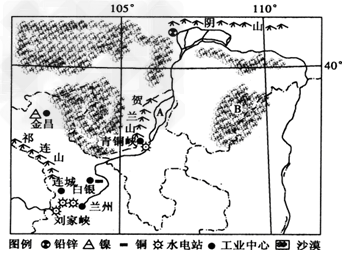问题
选择题
根据下图回答1-3 题

1.图中A 地区农业发展中存在较明显的土壤盐碱化问题,其产生的主要原因是:
①纬度较高,冻土发育,含盐水份不易下渗 ②气候干旱,降水少,蒸发旺盛③农业耕种过程中,长期采用大水漫灌的灌溉方式 ④地处河谷地区,水流平缓,对土壤侵蚀作用微弱 [ ]
A.①②
B.①③
C.②③
D.③④
2.图中B处在汉朝时还是水草丰美的大草原,而现在已变成一片沙漠,其人为原因是: [ ]
A.气候由湿润向干旱转变的结果
B.植被由草原向荒漠退化的
C.农业由耕种向畜牧转变的结果
D.人类过度开垦和放牧对植被破坏的结果
3.图示区域内甘肃、宁夏在黄河附近形成一条”,根据图中信息判断该工业地: [ ]
A.以棉、毛纺织工业为主的工业地域
B.以农产品加工工业为主的工业地域
C.以石油、煤炭开采为主的工业地域
D.以有色金属冶炼和水电为主的工业地域
答案
1、C
2、D
3、D
